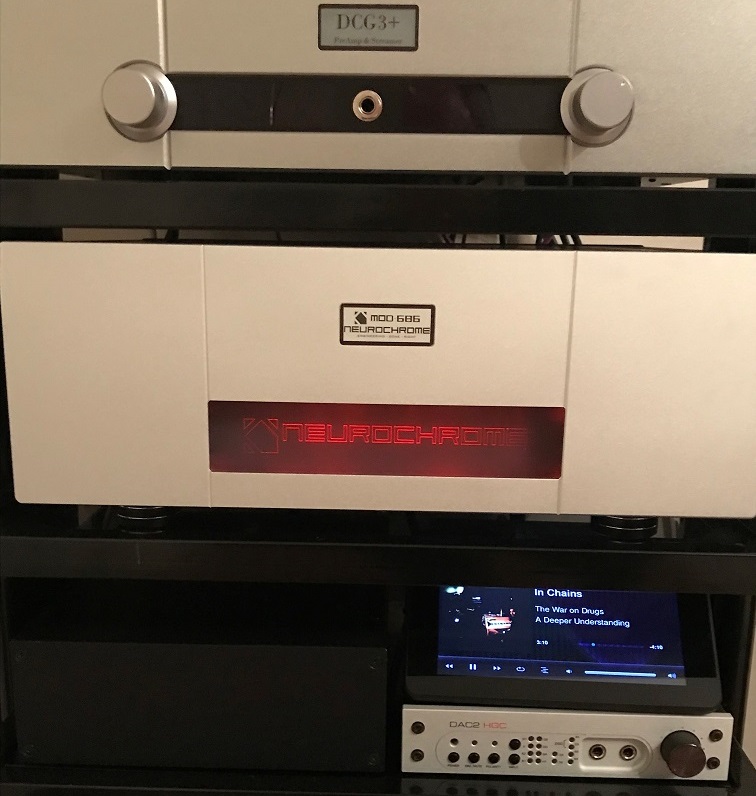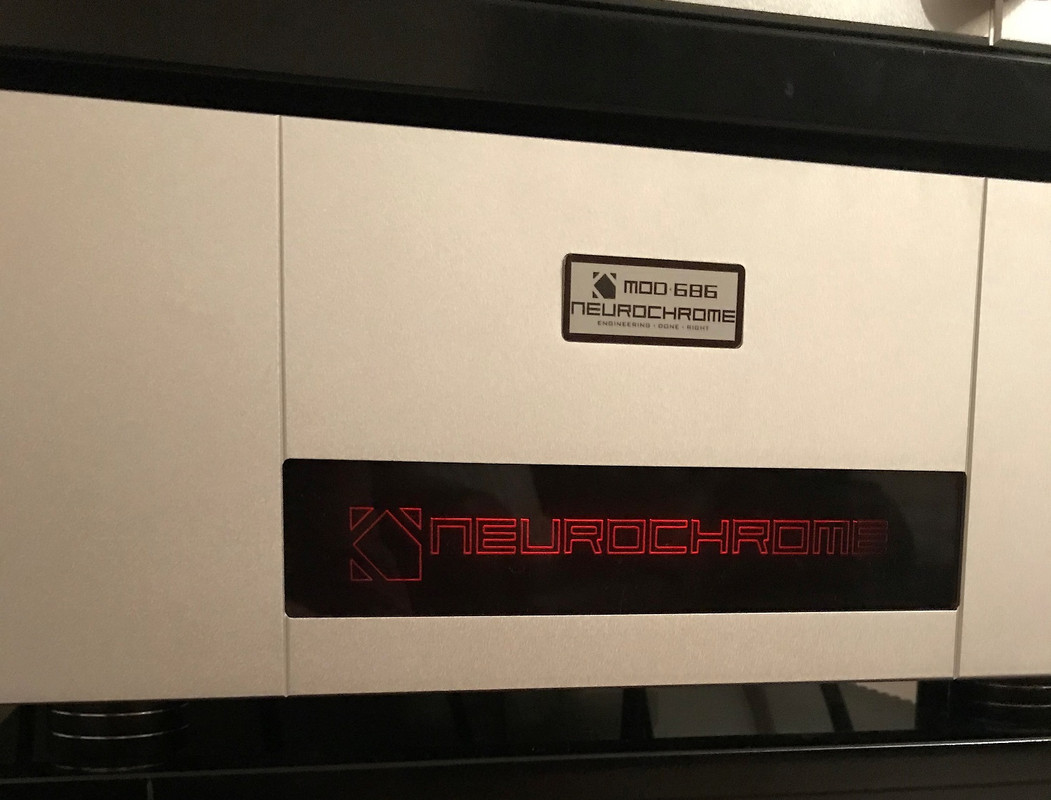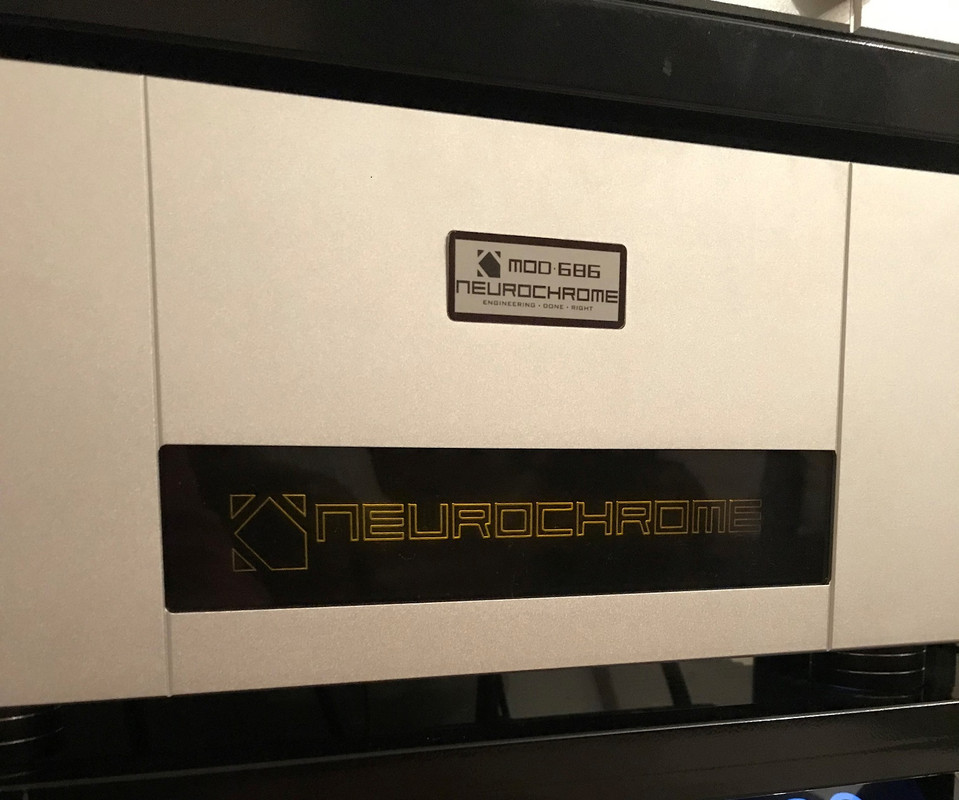Mean Well support just got back to me regarding the UHP-750-36.
After testing, they report that the minimum load needs to be 0.7A for the unit to stay out of the pulse skip mode.
Assuming the Mod-686 pulls 350 mA from each rail, that means two Mod-686 boards should result in exactly 0.7A being drawn from each supply.
That's cutting it close, but might work.
I'll probably add a 250 Ohm resistor to each rail just to give some headroom. This would result in about 5W of waste on each rail. I could probably go even lower if I wanted. However, the last thing I want is for it to be going in and out of pulse skip mode all the time.
After testing, they report that the minimum load needs to be 0.7A for the unit to stay out of the pulse skip mode.
Assuming the Mod-686 pulls 350 mA from each rail, that means two Mod-686 boards should result in exactly 0.7A being drawn from each supply.
That's cutting it close, but might work.
I'll probably add a 250 Ohm resistor to each rail just to give some headroom. This would result in about 5W of waste on each rail. I could probably go even lower if I wanted. However, the last thing I want is for it to be going in and out of pulse skip mode all the time.
That should work (famous last words). You can always get a chassis-mounted power resistor for the ballast resistor. Then just put it on the heat sink.
330-390 Ω will probably be good. That'll give you 100 mA of margin. I'd use a 25 W chassis-mounted resistor. Vishay makes some good ones. As does Caddock.
The Modulus-686 current draw is not 350.000 mA. It's more like 350-365 mA as I recall. So it's quite possible that a stereo pair will bring the supply out of pulse-skipping mode.
Tom
330-390 Ω will probably be good. That'll give you 100 mA of margin. I'd use a 25 W chassis-mounted resistor. Vishay makes some good ones. As does Caddock.
The Modulus-686 current draw is not 350.000 mA. It's more like 350-365 mA as I recall. So it's quite possible that a stereo pair will bring the supply out of pulse-skipping mode.
Tom
Just a note. In my measurements of the RPS-400-36, IIRC, the noise problem was not directly correlated to the pulse-skipping low-power mode. You should be out of the problem area if you are drawing enough current to not be in that operating mode. But, with the voltage adjustment cranked up to max (around 39.x Volts), noise went away with much less current draw than required to get out of pulse-skipping mode.
Good to know.
Another question about the Modulus-686 (and perhaps class AB amps in general)...(sorry if I'm polluting this thread)
Are there ever any scenarios where the supply needs to sink current?
Out of curiosity, I performed a risky experiment on my Modulus-86 amp where I attached a lab power supply to the amplifier's output and started trying to raise the voltage (with a current limit). As expected, the amplifier kept its output basically at 0 volts, and the power supply was purely current limited. I was able to push well over 1 amp back into the amplifier before I got scared and stopped.
Where was this current going? Was it purely dissipated as heat? I suspect it wasn't simply pushed back into the supply rail, since that wouldn't be sustainable.
Obviously, this is not a realistic scenario, but a more realistic similar scenario will be encountered when driving reactive loads (either electrically, or physically, like with a heavy subwoofer). In those cases, due to the amplifier's high damping factor, it may end up having to absorb some power to keep the cone controlled.
When adjusting the supply rails of these SMPS, we're bringing it closer to the over-voltage shutoff. If the supply has to absorb current (which it can't), then the rail might start to rise and end up tripping this protection.
Another question about the Modulus-686 (and perhaps class AB amps in general)...(sorry if I'm polluting this thread)
Are there ever any scenarios where the supply needs to sink current?
Out of curiosity, I performed a risky experiment on my Modulus-86 amp where I attached a lab power supply to the amplifier's output and started trying to raise the voltage (with a current limit). As expected, the amplifier kept its output basically at 0 volts, and the power supply was purely current limited. I was able to push well over 1 amp back into the amplifier before I got scared and stopped.
Where was this current going? Was it purely dissipated as heat? I suspect it wasn't simply pushed back into the supply rail, since that wouldn't be sustainable.
Obviously, this is not a realistic scenario, but a more realistic similar scenario will be encountered when driving reactive loads (either electrically, or physically, like with a heavy subwoofer). In those cases, due to the amplifier's high damping factor, it may end up having to absorb some power to keep the cone controlled.
When adjusting the supply rails of these SMPS, we're bringing it closer to the over-voltage shutoff. If the supply has to absorb current (which it can't), then the rail might start to rise and end up tripping this protection.
Just a note. In my measurements of the RPS-400-36, IIRC, the noise problem was not directly correlated to the pulse-skipping low-power mode. You should be out of the problem area if you are drawing enough current to not be in that operating mode. But, with the voltage adjustment cranked up to max (around 39.x Volts), noise went away with much less current draw than required to get out of pulse-skipping mode.
I concur with Brian. I have been running dual RPS-400-36 supplies for months now at something just over 40V and not a bit of noise from pulse skipping.
Finally got my front panel sorted out, not perfect but pretty near, red on standby, yellow when running ...
[url=https://postimages.org/] [/URL]
[/URL]
[url=https://postimg.cc/Hcmd4QhB] [/URL]
[/URL]
[url=https://postimages.org/]
 [/URL]
[/URL][url=https://postimg.cc/Hcmd4QhB]
 [/URL]
[/URL]Got the front panel logo looking a bit better, used a bit of black acrylic behind the lettering:
[url=https://postimg.cc/qtJzjWKg] [/URL]
[/URL]
[url=https://postimg.cc/zLx3Mpw7] [/URL]
[/URL]
[url=https://postimg.cc/qtJzjWKg]
 [/URL]
[/URL][url=https://postimg.cc/zLx3Mpw7]
 [/URL]
[/URL]Wow, the black acrylic led to a huge aesthetic improvement. I'm not a fan of the style (Tron, anyone?) but definitely see the appeal.
Just in case you all don't know, I did an interview with Tom on my podcast.
Here is Part 1
High-end audio design & PCB layout with Tom Christiansen, Neurochrome & TCA | Part 1 - YouTube
Here is Part 1
High-end audio design & PCB layout with Tom Christiansen, Neurochrome & TCA | Part 1 - YouTube
Attachments
It was great to chat with you. I'm amazed that the interview came out as coherent as it did given the variety of topics we covered.
I'm looking forward to Part 2.
Tom
I'm looking forward to Part 2.
Tom
Great interview! Looking forward to Part 2.
I've said it often, but once again.... Thanks, Tom!
Cheers,
Patrick
I've said it often, but once again.... Thanks, Tom!
Cheers,
Patrick
I gave it a listen. It was a fun interview.
As an Electrical engineer in the valley, i could relate to some of the aspects you mentioned.
Thanks Tom and Jtwrace
As an Electrical engineer in the valley, i could relate to some of the aspects you mentioned.
Thanks Tom and Jtwrace
Between Audio circuits, hockey, psychology, micro-breweries and photography you must be one busy guy 🙂
Beautiful photograph. Must have been breathtaking to experience in person.
Thank you. Yeah... I was a bit spoiled living within a relatively easy drive of Mt. Rainier. Now I'm within an even easier drive of the Rocky Mountains.
Tom
- Home
- Vendor's Bazaar
- Modulus-686: 380W (4Ω); 220W (8Ω) Balanced Composite Power Amp with extremely low THD


